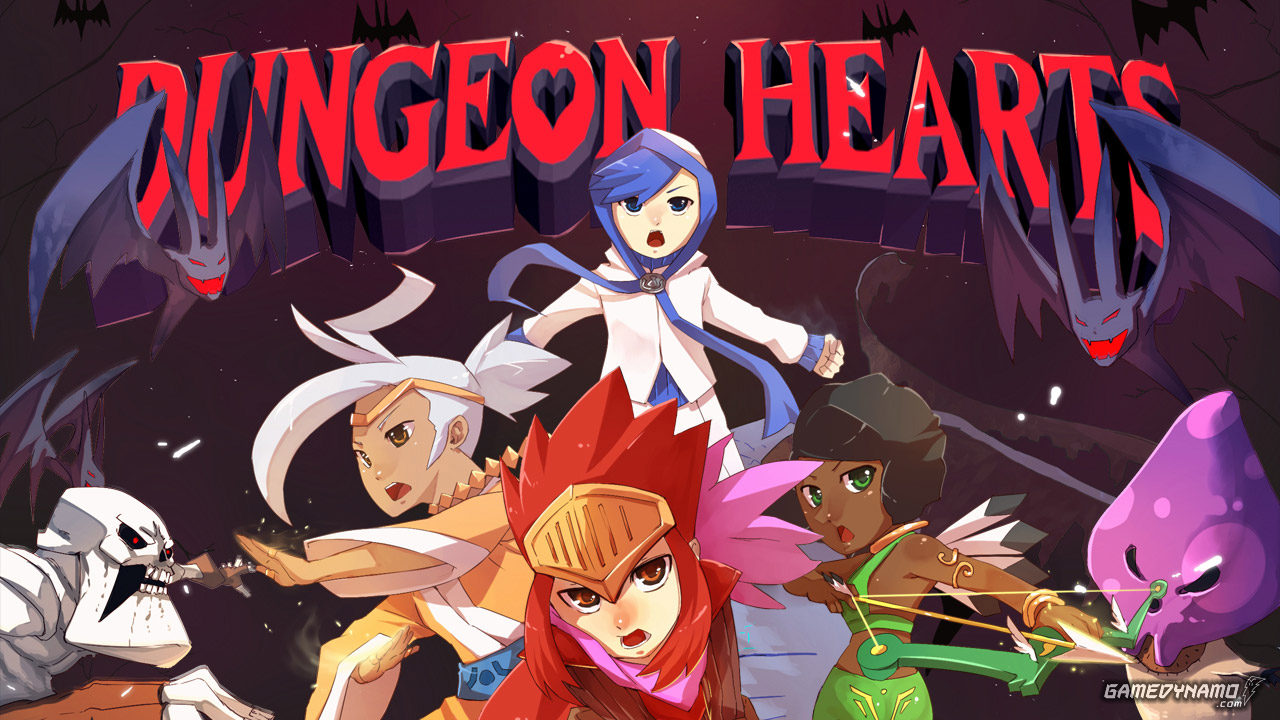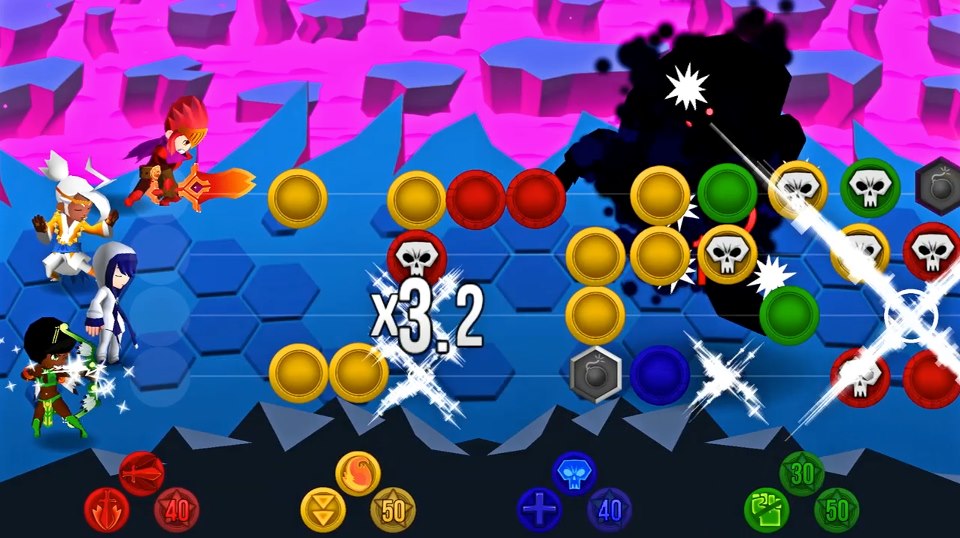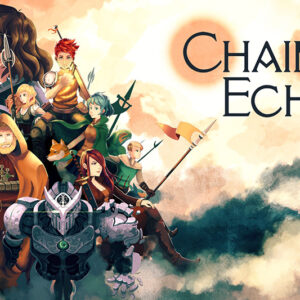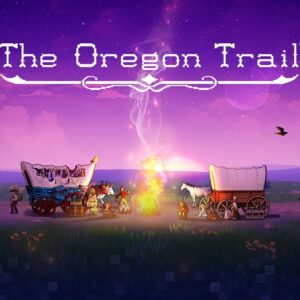Fate Streams Onward: Dungeon Hearts Reviewed

I saw Dungeon Hearts by Cube Roots, published by Devolver Digital.posted on Steam at one point, and was intrigued. I tagged it, and bought it when it came out. For $2.99 how could I lose, and it looked to be a fun RPG – it’s also available on just about every platform out there.
Turns out it was one of the best $2.99 I’d spent on a game in a long, long time. So I figure a review is in order.
So what is Dungeon Hearts? Imagine a light roguelike crossed with a JRPG, a Match-3 game, bit of Guitar Hero, and Klax. OK, that may be a bit hard to digest, so let’s take a look at the game.
You control four heroes who are charging through the land to defeat the Dark One, who to judge by the name, is really not a nice person. On the way they get into involved battles with assorted monsters and minions, gain experience, and work to survive long enough to defeat their foe. It sounds pretty standard.
Until you get to the gameplay.
See there’s no usual button mashing here. What you do is manipulate fate.
Scrolling across the screen is the Fatestream, with various symbols. Some, when combined, let you attack. Others let the enemy hurt or affect your party, and you need to move them and delay them or destroy them. You can line up your various attacks to create massive cascades of damage if you get creative, but the ever-moving Fatestream doesn’t let up.
The Fatestream mechanic is compelling, challenging, and frankly pulse-raising. The constantly moving and shifting stream requires you to constantly think, plot, plan, and in a few cases act out of panic. Even on “Easy” it took me awhile to win the game (I’m up to “Hard” and haven’t won at that level).
The Fatestream also varies between enemies, providing different speeds, pacing, and symbols. Every enemy ends up different, requiring you to think differently about what you’ll do, why damage you’ll risk, and what side effects may affect your party. Every fight can be radically different.
When enemies are defeated, you then have a Fatestream of symbols to line up where you can level up your characters. That keeps moving as well, so if you don’t pay attention, your characters won’t level up. As you may guess, you use pause liberally in this game to get a break.
Finally, the characters each have their own skills that they gain and charge up over time. Some heal, some harm, some change the Fatestream, many temporarily restart it. Skill usage is important to beating the game, especially the many skills that “reboot” the Fatestream.
This is a great package for a few dollars, but there’s also different tunes you can unlock, a little backstory as you face new enemies, and a really enjoyable, colorful aesthetic. These extra details really polish the game and make it even more enjoyable.
This is not a game that was made. This is a game that was crafted, and well-crafted as well. I spent $2.99 and as of now I put twelve hours into it. I’ve gifted it to several people.
You can’t loose for $2.99. Me, I’m anxiously waiting to see what Cube Roots does next, because if it’s anything like Dungeon Hearts, it’s going to be worth it.
Steven Savage is a Geek 2.0 writer, speaker, blogger, and job coach. He blogs on careers at http://www.fantopro.com/, nerd and geek culture at http://www.nerdcaliber.com/, and does a site of creative tools at http://www.seventhsanctum.com/. He can be reached at http://www.stevensavage.com/.




